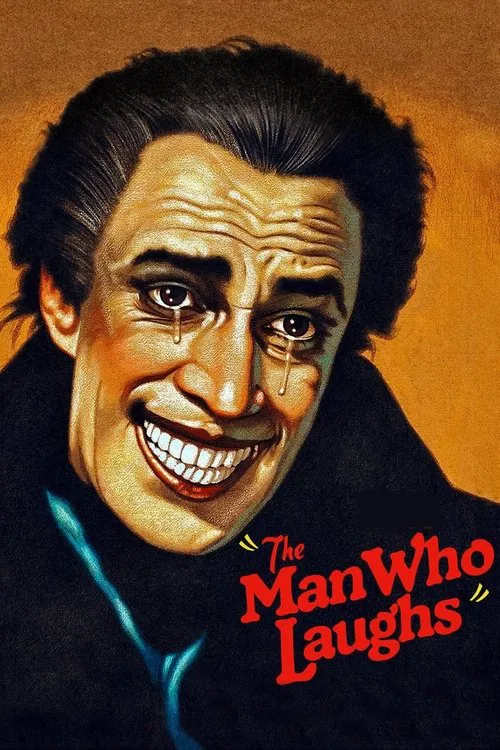The Man Who Laughs

Plot
In this haunting yet melodramatic tale, Victor Hugo's classic novel, "The Man Who Laughs," was initially adapted as a silent film by Paul Leni in 1928. The movie, set in the late 17th century, tells the story of Gwynplaine, the son of the English aristocrat, Lord Clancharlie. However, fate has a peculiar way of reshaping one's destiny, and Gwynplaine's has been cruelly marred by the actions of a tyrannical King, who sought vengeance on the young man's father for a perceived betrayal. In a grotesque display of power, the King orders the young Gwynplaine to be taken away, where the royal jester performs a horrific act of mutilation upon him. With a jagged edge of metal, the jester carves a permanent, macabre smile onto Gwynplaine's face. The once-innocent young man is left scarred physically and emotionally, bearing a perpetual grin that seems to mock his own suffering. Gwynplaine's newfound appearance earns him an unlikely acceptance as a performer in a travelling circus, run by the enigmatic and wise showman, Ursus. Gwynplaine's unique visage proves to be a major draw for audiences, and he quickly rises through the ranks to become the circus's star attraction. However, beneath the gleam of fame and adoration, Gwynplaine's heart remains heavy with a deep-seated sorrow and longing for a life he once knew. As fate would have it, his path crosses with Dea, a young and beautiful blind woman. Their chance encounter is nothing short of serendipitous, and the two form a deep and profound bond. Dea, unaware of Gwynplaine's past, senses a kindred spirit in the tormented young man, and their connection is almost palpable. The blossoming romance between the two serves as a beacon of hope in Gwynplaine's otherwise bleak existence. However, the shadows of the past continue to haunt Gwynplaine, and with the King's death, a new threat emerges in the shape of his successor, and an even more sinister royal jester. As the years pass, the jester, Domino-Henri, relentlessly pursues Gwynplaine, determined to destroy the young man or exploit his tragic circumstances for his own evil purposes. Domino-Henri's twisted motives are further complicated by a sense of paternalism, as he seeks to "mother" Gwynplaine and claim him as his own. The relationship between the two characters is complex, veering perilously close to a twisted form of Stockholm syndrome. As Gwynplaine struggles to navigate the dark recesses of his own psyche, Domino-Henri pulls every imaginable string to break the young man's spirit, sowing the seeds of chaos and despair wherever Gwynplaine turns. One pivotal scene showcases Gwynplaine at his most despairing, lost in a desolate landscape, tormented by the memories of his past and the constant presence of the malevolent jester. In this bleak moment of vulnerability, he comes face-to-face with Dea, her unwavering love and devotion providing the spark needed to revive the embers of his own resolve. Throughout the tumultuous journey that unfolds, Gwynplaine is torn between his loyalty to Ursus and the circus, which has become a surrogate family, and his love for Dea, who embodies a chance at redemption. As the stakes rise, and Gwynplaine finds himself trapped in a labyrinth of intrigue and betrayal, his determination to protect his loved ones and clear his name becomes an all-consuming force. Ultimately, "The Man Who Laughs" is a timeless tale of a man's struggle to find redemption and forgiveness in the face of unimaginable adversity. Through Gwynplaine's tragic story, we are confronted with the unyielding horrors of human cruelty and suffering. The movie is an intense exploration of the complexities of the human condition, and the enduring power of love to transcend even the most formidable of obstacles.
Reviews
Recommendations




